Blog Posts
By Year
20252024
2023
2022
2021
2020
2019
2018
2017
2016
2015
2014
2013
2012
2011
2010
2009
2008
2007
2006
2005
2004
2003
2002
2001
2000
1999
1998
| Digiscoping the Sun | |
| Testing out different gadgets. | |
| April 20, 2024 [Photos] | [Next Page - Bluebirds] |
Even though the eclipse is over and there isn't another one in the Lower 48 until 2044, I've spent the past few days looking at the Sun with my Coronado Personal Solar Telescope (PST), my Televue 85 telescope with neutral density filter, and various digiscoping devices. I got the PST almost 20 years ago after looking through one on an astronomy tour of the Southwest. It has never been easy to see through, but my last few attempts to use it I didn't see much except a red blob. Internet research revealed that these early PSTs suffered from corrosion of the interior filters that gradually reduced contrast. I have never been able to attach a conventional camera to this PST, but in one last-gasp effort I used a gizmo I got several years ago that mates a telescope eyepiece with a cell phone camera. On one hand, I saw a prominence! On the other hand, the images are terrible. Even though it seems the interior filters can be replaced, I don't want to mess with it and put the PST on eBay as a restoration project. I already have a couple bids, so in a week it will be going out the door. 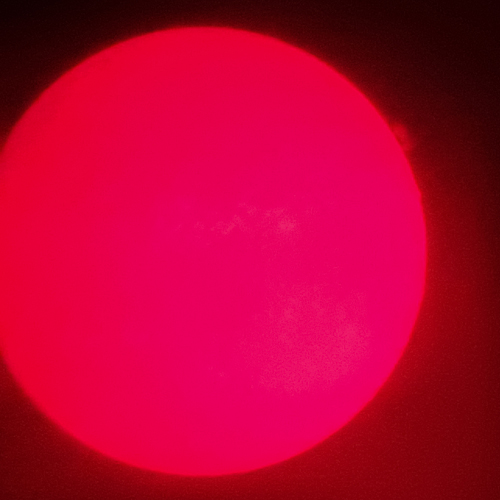
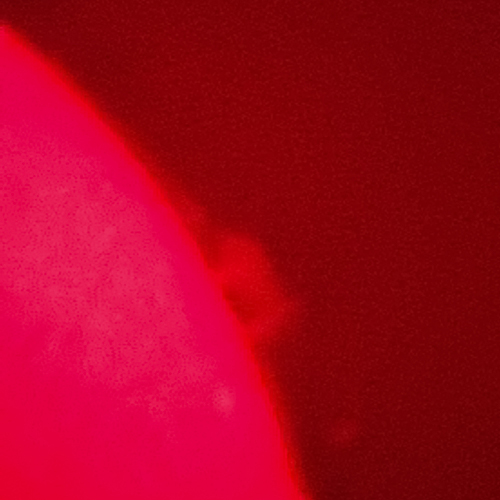 With that out of the way, I did some experimenting with the Televue to see (a) if it provides enough capability for when I want to shoot the Sun, and (b) what is the optimal setup. A telescope like a properly-functioning PST reveals surface details and prominences that can't be seen though an ND filter. But will I use a solar scope enough to justify such a purchase? I haven't answered that question yet. Regarding optimal setup, I had quite a few options from which to choose. I used the Canon M100 camera as the test platform for a couple reasons. The first reason is it has a smaller sensor than my two DSLRs, so the Sun disc fills more of the frame. The second reason is I just received a new eyepiece gizmo that attaches directly to the M100 as a T-mount. So the different things I tried, in order of preference, were:
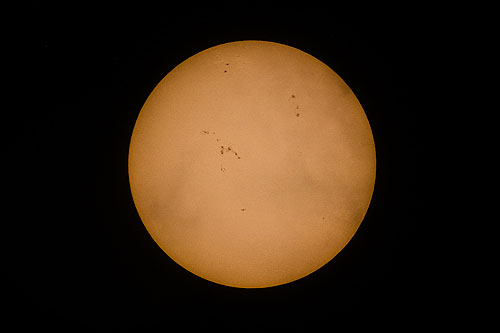
April 18 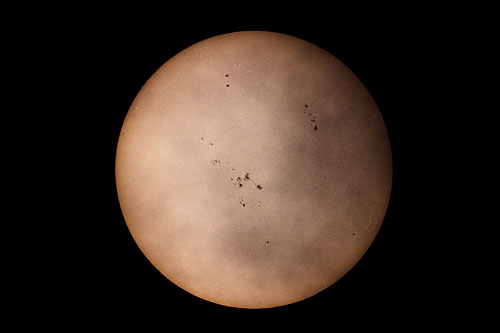
April 19, sharp even with high clouds 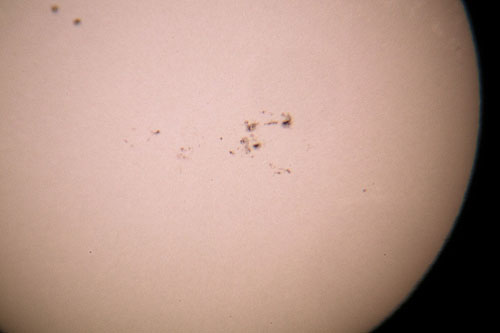
April 20 closeup 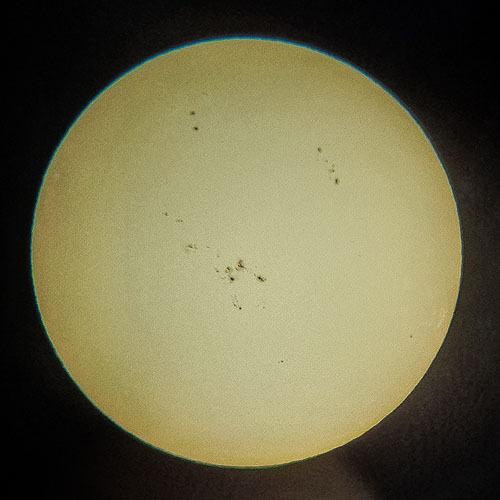
Phone camera There also were quite a few configurations that could not achieve focus. I won't go into all of them, but I have another Barlow, a Televue 3x, that is better than the one built into the MaxView I. With the 20mm eyepiece attached, it provided good viewing of the sunspots. But I'm not sure how to attach it to a camera. Another question is whether I should be using a camera like the M100 to shoot the Sun. People who are serious about solar photography buy specialized eyepiece-sized video cameras, usually monochrome. They extract thousands of frames from the video and use a program like AutoStakkert to stack the images, reducing signal noise. I experimented with this, shooting 10-second videos with the M100 and stacking the result. It was a simple process and produced an underwhelming image in just a few minutes. The reason the image was underwhelming is due to the resolution of the M100. Although M100 still photos are 6,000 x 4,000 pixels, video is only 1,920 x 1,080 (1080p). And at prime focus (no eyepiece), the disc of the Sun only filled 478 pixels of that 1,080 pixel height. In the originals of the still images, the Sun is 1,504 pixels in diameter, so (squaring the numbers) has almost 10 times as many pixels as the video images. An alternative to video would be to fire off bursts of still images and stack those, but in 10 seconds the M100 can only produce 10 images versus a video which has 600 frames. I just don't know if it is worthwhile to spend $200-600 on a dedicated telescope camera when my interest in astrophotography seems to wane for years at a time. FWIW, I'm classifying these M100 images through the telescope as digiscopes. My definition of digiscoping includes attaching a conventional camera to a telescope, although a strict definition would involve the use of an eyepiece. With prime focus, there is no eyepiece, but "my web site my rules." I hadn't marked any images as a digiscope since I shot the Transit of Venus with a handheld camera through my binoculars in 2012, but I went back and marked another 16 shots (eclipses, Mercury) taken with the telescope in the years since then. So what did I learn this week? First and foremost, focusing is one of the biggest challenges when digiscoping. The only time I had autofocus was with the phone, and that was probably 50/50. (The autofocus on the 50mm EF is broken, so I couldn't test that. It occurred to me just now after I put everything away that my 100mm EF macro lens has the same size filter ring and might work with the MaxView II.) If my neighbors looked out the window this week, they may have seen me sitting at the scope with a towel over my head, trying to make the sunspots sharp. You do what you have to do. Going back to the original question of why I'm doing this AFTER the eclipse, as strange as it may sound, I learned that shooting an eclipse and shooting the sun are two distinct activities. It amused me that people were buying expensive h-alpha telescopes (the $899 PST being a relatively inexpensive example) for the eclipse because they are useless during totality. In the 10 days after the eclipse, I have been shooting the sun trying to pick out sunspots and surface details with neutral density filters. I consider that part of figuring out whether I want to get back on the h-alpha bandwagon after disposing of the ancient and useless PST. As I said, that question is still open, but I now have a good handle on the best configuration for shooting the Sun with an ND filter. Which is: Canon 6D DSLR, 100-400mm lens (autofocus most of the time), 1.4x teleconverter, and orange mylar filter. Wait, what? If the DSLR and camera lens is preferable, why did I go through this telescope eveluation process? The telescope setup does have a few advantages. The apparent size of the sun is a bit larger with the telescope using prime focus, and much larger using an eyepiece and Barlow. The Televue filter color is not as red. And if I do get a new PST or something better, the techniques I've been using on the Televue and reading about on the interweb will translate to that. Update: I'm finishing off this sequence with a shot of the full moon taken with the 6D, 500mm, and 1.4x extender. It is the best shot of the moon I have, but I have to admit it is still not that good. This is a still image, and trying to stack a video didn't work very well either...uh... Enjoy! 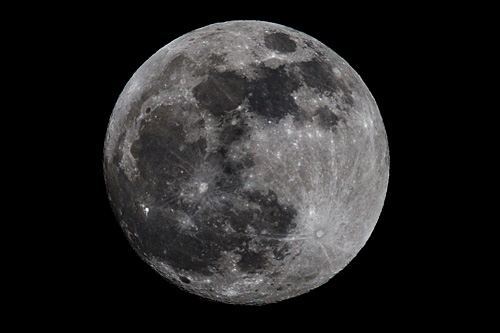
April 22 | |
Top Menu | Destinations | Years | Species | Aircraft, etc. | Blog | Contact Info
All photos ©1998-2025 by Thomas O'Neil